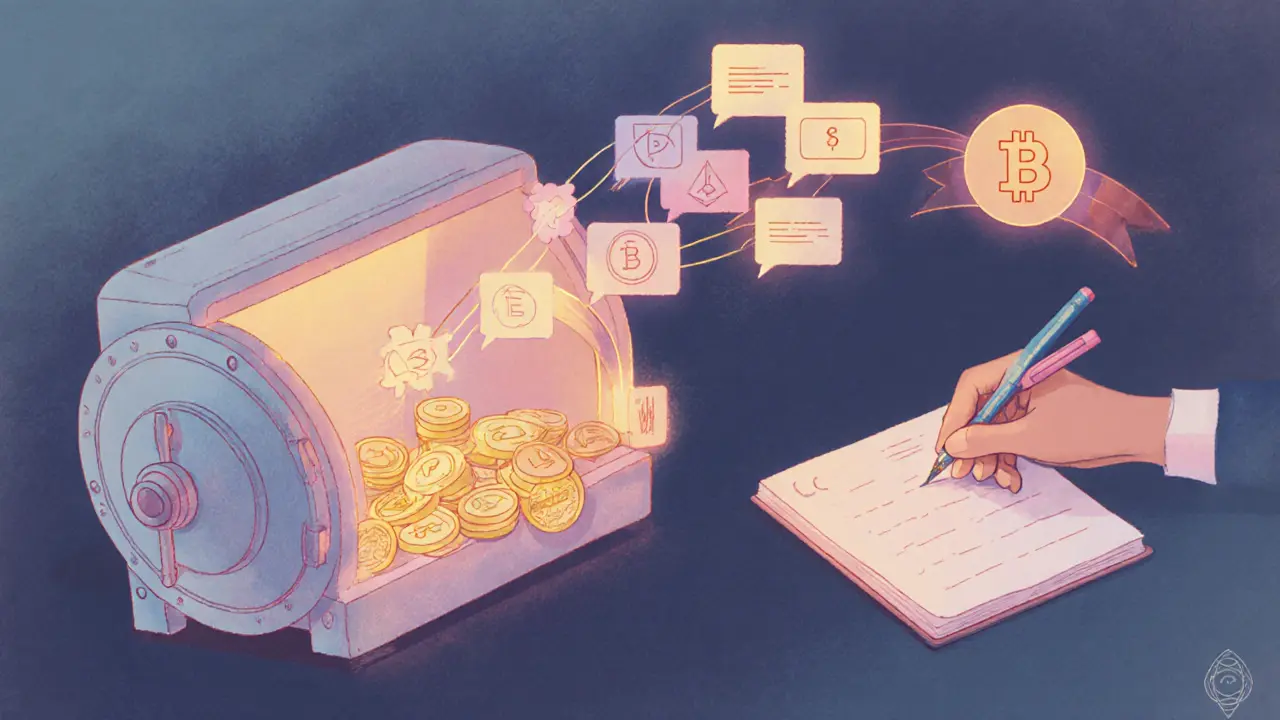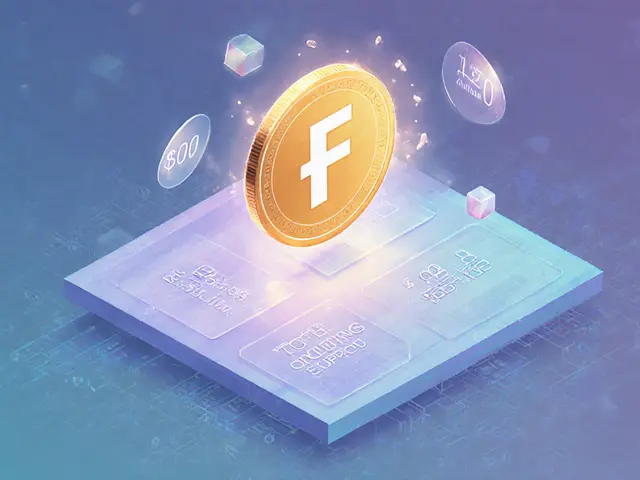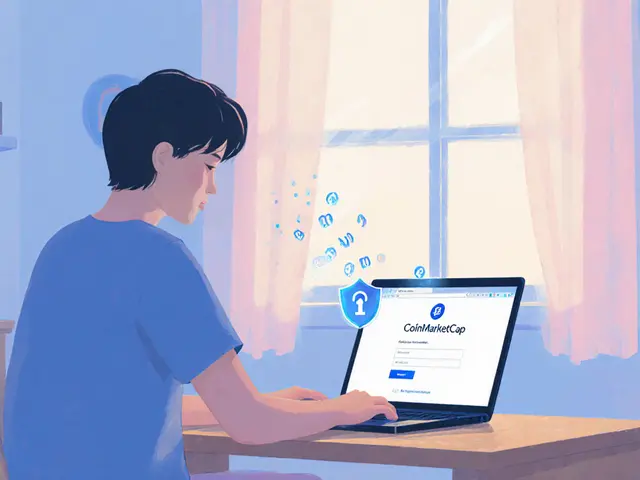Understanding State Channels: Blockchain Scaling Made Simple

State Channel Cost Calculator
Calculate Your Savings
State Channels is a Layer 2 scaling solution that moves multiple transactions off‑chain while keeping the security guarantees of the underlying blockchain. They let two or more parties transact endlessly without each move hitting the main chain, then settle only the final balance. If you’ve ever wondered why Bitcoin’s Lightning Network feels instant and cheap, the answer lies in state channels.
How State Channels Work
Think of a state channel as a private ledger between friends. First, participants lock a slice of on‑chain assets into a multisignature contract. That contract acts like an escrow that requires every party’s signature to spend the funds. Once the deposit is confirmed, the channel is "open" and the parties can exchange signed messages that describe new balances. Each message supersedes the previous one, so the latest signed state always reflects the true distribution of assets.
Because these messages never touch the blockchain until the channel closes, you get near‑instant confirmations and fees that are a fraction of an on‑chain transaction. The underlying blockchain still guarantees final settlement: if a dispute arises, the contract can be forced to read the latest valid state from the on‑chain dispute window.
Opening and Closing a Channel - Step by Step
- Agree on channel parameters (participants, assets, timeout).
- Deploy a multisignature contract on the main chain.
- Both parties deposit their agreed‑upon assets (ETH, ERC‑20 tokens, BTC, etc.).
- Channel is now open - start exchanging signed off‑chain transactions.
- When you’re done, each side signs a final state and submits a single on‑chain transaction to close the channel.
- If one party tries to cheat, the other has a dispute window (usually a few days) to present a newer state and claim the correct balance.
This process boils down to just two on‑chain writes, regardless of how many off‑chain trades happen in the middle.
Security and Dispute Resolution
The security model hinges on two ideas: cryptographic signatures and a timeout‑based challenge period. Every off‑chain update must be signed by all participants, so a malicious actor can’t forge a new balance. If a participant tries to broadcast an outdated state, the counterpart can submit a newer one within the dispute window, and the contract automatically rewards the honest party while penalising the cheater (often by slashing a portion of the locked deposit).
Because the contract enforces these rules on‑chain, the system inherits the base blockchain’s consensus security. Even though most activity stays off‑chain, the final settlement is as trustworthy as any normal transaction.

Key Use Cases
- Micropayments: Paying a few cents for a video clip or a per‑second stream becomes viable when fees drop to fractions of a cent.
- Gaming: Real‑time moves, bets, or NFT trades can happen instantly without waiting for block confirmations.
- Internet of Things: Devices can exchange tiny payments for services (e.g., a sensor paying for data) without draining battery on heavy computations.
- Enterprise settlements: Two businesses with frequent trades can keep a channel open for days, reducing accounting overhead.
State Channels vs. Other Layer 2 Solutions
| Feature | State Channels | Rollups (Optimistic / ZK) | Sidechains | Plasma Chains |
|---|---|---|---|---|
| On‑chain tx count per session | 2 (open & close) | Batch every few seconds‑minutes | 1 per batch | 1 per exit |
| Ideal user set | Known, recurring participants | General public | General public | General public |
| Latency | Sub‑second (off‑chain) | Seconds to minutes (depends on challenge period) | Seconds | Minutes |
| Capital lock‑up | Required for entire channel lifetime | Minimal (only for proof) | Optional | Optional |
| Routing complexity | Needs multi‑hop routing for indirect payments | Native - no routing needed | Native - no routing needed | Native - no routing needed |
From the table you can see why state channels dominate niche scenarios like micropayments, while rollups are better for broad public usage.
Benefits and Drawbacks
Benefits
- Near‑instant finality - no waiting for block confirmations.
- Fees shrink to the cost of two on‑chain transactions.
- Privacy: only participants see the off‑chain activity.
- Scalability: unlimited transactions per channel.
Drawbacks
- Both parties must stay online to react to disputes.
- Capital sits idle in the contract for the channel’s lifespan.
- Routing through multiple intermediaries is still an open research problem.
- Implementation complexity - you need solid smart‑contract and cryptographic skills.
Getting Started - Tools and Resources
If you’re a developer, here’s a practical checklist:
- Learn about Ethereum’s Solidity language and how to write multisignature contracts.
- Pick a framework: Lightning Network (Bitcoin) or Raiden Network (Ethereum) have ready‑made SDKs.
- Run a local testnet (e.g., Ganache for Ethereum) and deploy a demo channel.
- Implement off‑chain message signing using libraries like
ethers.jsorbitcoin‑js. - Test dispute scenarios: force a stale state close and verify the challenge mechanism works.
- Read the community docs - Lightning Labs’ “Lightning Network Handbook” and Raiden’s “Developer Guide” are excellent starting points.
Typical development time ranges from two weeks for a simple demo to three months for a production‑ready, fully audited channel system.
Future Outlook
State‑channel research is shifting from pure payment rails toward hybrid solutions. Upcoming proposals aim to combine channel routing with rollup batch settlement, giving users the best of both worlds: instant off‑chain speed and easy on‑chain exits. Expect better UI/UX tools, non‑custodial mobile wallets with one‑click channel creation, and deeper integration with DeFi protocols that need rapid, high‑frequency trades.
While rollups will dominate mainstream scaling, state channels will stay vital for ultra‑low‑fee use cases-think IoT sensor networks, in‑game micro‑economies, and real‑time betting platforms. Keep an eye on Lightning Network’s growth (over 4,000 nodes and counting) and Raiden’s evolution as it pivots toward hybrid rollup‑channel designs.
What is the main advantage of state channels over on‑chain transactions?
They reduce the number of on‑chain writes to just two (open and close), which makes transactions virtually instant and nearly free.
Do I need to stay online 24/7 while a channel is open?
You need to be reachable during the dispute window (usually a few days). If you’re offline, a counter‑party could try to close the channel with an old state, but you lose the chance to challenge.
Can state channels handle more than two participants?
Yes, multi‑party channels exist, but they add complexity in state management and require all participants to sign each update.
How does a state channel differ from a sidechain?
Sidechains are separate blockchains that periodically commit snapshots to the main chain. State channels keep the full transaction history off‑chain and only settle the final balance.
Is there any real‑world example of state channels in use today?
The Bitcoin Lightning Network powers thousands of merchant payments and instant swaps, and Ethereum’s Raiden Network enables fast token transfers for gaming platforms.







State channels are a great way to cut down on on‑chain fees, especially for apps that need to move tiny amounts many times. You lock some ETH or tokens in a multisig, trade off‑chain, and only write two transactions at the end. This keeps the security of Ethereum while giving you near‑instant confirmations.
Yo, if you’re looking to build a game or a streaming service, channel tech is defintely the way to go. You can spin up a channel, let users pay per second, and avoid the crazy gas spikes that poach away your revenue.
Rapid swaps, no extra fees.
While the exposition glosses over the inherent trade‑offs, one must acknowledge that the capital lock‑up requirement fundamentally limits the scalability narrative. The notion that “unlimited transactions” can be achieved disregards the opportunity cost of funds immobilized for potentially weeks, especially in volatile markets where liquidity is paramount. Moreover, the reliance on continuous online presence injects a layer of operational risk that many enterprises are ill‑prepared to absorb.
Interesting point! However, in practice many projects mitigate the lock‑up by using collateral pools and automated rebalancing, which keeps the user experience smooth, while still leveraging the lightning‑fast finality that state channels provide. Plus, the privacy benefits are a nice bonus for users who hate their transaction history being public!
From a US perspective, adopting state channels could give our fintech firms a competitive edge over foreign rivals. The ability to settle micro‑payments instantly aligns with the speed expectations of American consumers, and it could help keep capital within domestic ecosystems.
Indeed, the domestic regulatory framework may actually streamline the integration of channel solutions, provided that clear guidelines around escrow and dispute windows are established.
Love seeing this breakdown! 🙌 State channels make tiny, frequent payments feel seamless, and the emojis just make the whole thing more fun! 🎉🚀
Think of state channels as a disciplined partnership; both sides must stay honest, or the contract will penalize the liar. This simple incentive structure is what keeps the system trustworthy.
One must also consider the hidden centralization pressures that arise when a few large node operators dominate routing paths, effectively creating an invisible monopoly that could be leveraged to extract fees or censor payments under the guise of “network efficiency”.
It’s worth questioning whether the hype around state channels distracts us from more inclusive scaling solutions that don’t require users to lock capital for extended periods.
Oh, great, another “miracle” layer‑2 that promises instant payments-because we definitely needed more complexity in the blockchain ecosystem!!!
If you’re just starting out, try setting up a simple two‑party channel on a testnet first. Monitor the dispute window, and practice submitting a stale state to see how the contract reacts. That hands‑on experience is invaluable before moving to production.
State channels represent a fascinating intersection of cryptographic guarantees and practical usability, and their design philosophy underscores a broader trend toward modular blockchain architectures. By isolating frequent state transitions off‑chain, developers can sidestep the latency and expense inherent to on‑chain consensus, thereby delivering user experiences comparable to traditional web applications. The security model, anchored in multi‑signature escrow contracts, ensures that any deviation from the agreed state can be contested during a clearly defined dispute window, preserving the underlying blockchain’s trust assumptions. Moreover, the requirement that all participants remain online-or at least reachable-introduces an operational discipline that aligns incentives across parties, reducing the likelihood of malicious behavior. While the capital lock‑up can be perceived as a drawback, it also acts as a financial bond that deters fraud, creating a self‑regulating ecosystem. In practice, many projects mitigate this by employing liquidity pools that dynamically allocate collateral, thus minimizing the idle capital for end‑users. The scalability benefits are evident: a single channel can process an arbitrary number of micro‑transactions without further on‑chain interaction, effectively achieving “unlimited” throughput within the constraints of the locked balance. Additionally, privacy is inherently enhanced, as only the channel participants observe the detailed transaction history, unlike public ledger models where every move is visible. This confidentiality can be crucial for business use cases involving sensitive data or competitive pricing strategies. From an engineering perspective, the implementation complexity is non‑trivial; developers must master secure signature schemes, state serialization, and robust fallback mechanisms to handle disputes gracefully. Nonetheless, the availability of mature SDKs for both Bitcoin’s Lightning Network and Ethereum’s Raiden framework lowers the entry barrier for newcomers. The future likely holds hybrid solutions that combine the instant finality of state channels with the batch settlement efficiency of rollups, offering the best of both worlds. As the ecosystem matures, tooling will become more user‑friendly, and we can expect broader adoption across domains such as IoT, gaming, and decentralized finance. Ultimately, state channels are not a panacea, but they constitute a vital component of the scaling toolbox, providing a pragmatic path toward high‑frequency, low‑cost blockchain interactions.
Great insights all around! 🎈 Let’s keep sharing resources and maybe set up a community channel for troubleshooting together. 🚀